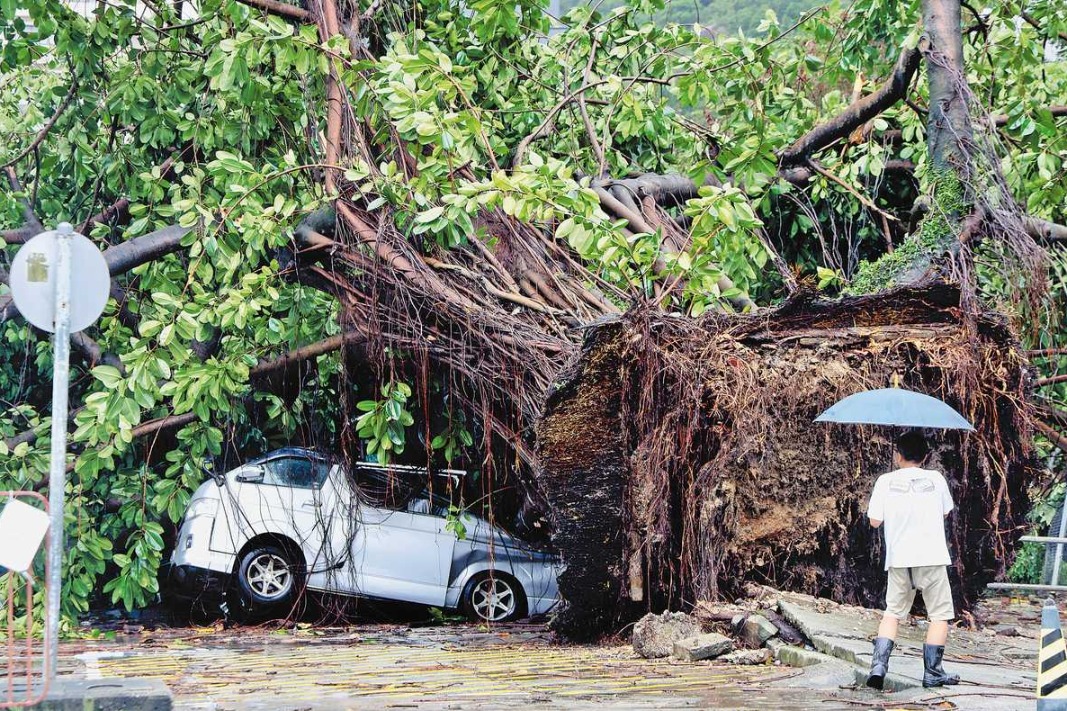Bamboo to bring Kenya green hopes
Joint agroforestry project with China expected to address climate challenge

For years, local communities living along the turbulent banks of the Nzoia River in Busia County, a town in the western part of Kenya have battled the relentless cycle of seasonal flooding.
Thousands have lost their homes due to the heavy rains, families have been split up, and their sources of income have been destroyed.
Dan Opilo, an official of Busia County, highlighted the challenges that climate change brings, especially during flood season.
"When flooding comes during the long rainy seasons, it washes away homes and causes deaths. Every single year we have to seek humanitarian assistance because we don't have enough resources to assist the flood victims," Opilo said.
He mentioned that the national government had promised to construct dykes along the river, but a lack of funding has derailed the project.
However, bamboo is expected to bring hope to the villagers along the riverbank. An agroforestry initiative partnership between China and Kenya aimed at reclaiming the ecosystem along the banks of the river by growing bamboo forests is being implemented in the county, which is anticipated to greatly relieve the loss caused by flooding.
The project, funded by the Chinese Academy of Sciences through its Sino-Africa Joint Research Center in Kenya, is being implemented by the United Nations Environment Program's affiliated International Ecosystem Management Partnership, UNEP-IEMP, in conjunction with other local partners.
Wang Guoqin, program manager at UNEP-IEMP, said that the project, called "Ecosystem Restoration for Enhancing Livelihoods and Addressing Climate Change: China-Kenya Cooperation on Bamboo Technology Transfer", is aimed at reducing the flooding risks, restoring ecosystems and providing other income-generating opportunities for the local farmers.
The first phase of the project, launched in the middle of this year, targeted seven hectares of riverbanks to be reclaimed through bamboo farming, and by next year 25 hectares of land will be restored, Wang said.
"This project runs for three years, currently we have trained 250 local farmers in bamboo farming technology, but we will train more farmers along the Nzoia River. The training focuses on areas like bamboo nurseries, intercropping farming techniques and bamboo value addition," Wang added.
She further stated that research has shown bamboo can help in the stabilization of the soil and buffering flooding.
Alice Auma, who owns a three-hectare land of bamboo, is among the 250 local farmers who were trained in bamboo farming techniques such as nursery management skills in Busia. She has been in bamboo farming for more than two decades.
"I did not know that bamboo can help in the conservation of our environment against climate change calamities like flooding. But now I have learned that with bamboo planted along the riverbanks, it helps the soil to stay intact," Auma said.
She stated that the bamboo tree has also helped her create a good environment around her homestead.
"Today if you visit my home, you will feel the good cool breeze that my children enjoy every single day. The other factor is that I sell my bamboo to furniture makers in Busia and this earns me a good income," she added.
Symprose Anyango, a coordinator with Eco-Green Kenya, a community-based organization empowering women in bamboo farming, explained that women are among those most affected by climate change.
Income-generating activity
"When the floods come, they wash away crops like maize that were grown for commercial and domestic usage but today our women have embraced bamboo farming as an income-generating activity. They weave traditional artifacts and sell them for a decent income."
Dennis Ochuodho, director of Blue Economy Institute at Jaramogi Oginga Odinga University of Science and Technology in Kenya, another participant in the project, added insights on bamboo's resilience.
He noted that research has proven bamboo can grow in almost any climate, even in poor soil. Its deep roots help prevent soil erosion, and the plant reaches maturity within just five years.
"After three years we want to see how this agroforestry project will boost the ecosystem in this area."
Liu Huabo, program officer at the Chinese Academy of Sciences, said that the project will not be limited to Busia County.
"If there is the availability of funding then we plan to roll it out to other parts of the country with the aim of combating climate change effects in Kenya."
In a bid to drive the realization of 10 percent forest cover by 2030, Kenya rolled out the National Bamboo Policy 2022, which seeks to spark new measures to enhance bamboo growth and sustainable management of bamboo resources.
Ochuodho said that the bamboo plantations under the policy will improve Kenya's resilience to climate change by stabilizing soils and acting as carbon sinks.
The writer is a freelance journalist for China Daily.
Today's Top News
- China, EU to hold 25th China-EU Summit in Beijing
- China's internet users rise to over 1.12 billion as of June
- Japan's ruling coalition loses majority in both parliament houses
- Mega-hydro project launched in Xizang
- Xi, Mauritanian president exchange greetings on ties
- China optimizes foreign exchange reserve structure






























